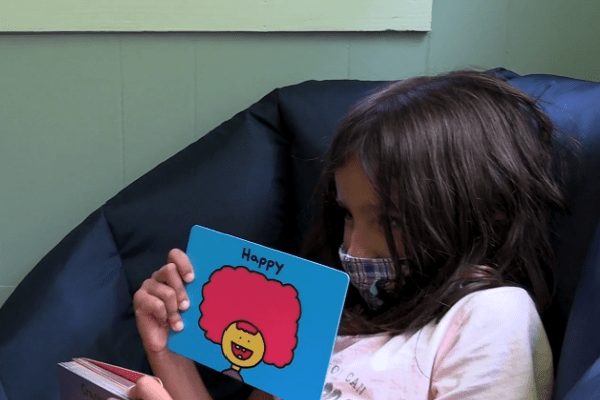Mental healthcare for children is more important than ever. Mental health of children in the United States and around the world has suffered greatly since the beginning of the pandemic. However, research has shown that American children were experiencing a mental health crisis long before COVID. In fact, in a December 2021 Advisory, Surgeon General Dr. Vivek Murthy noted that “even before the pandemic, an alarming number of young people struggled with feelings of helplessness, depression, and thoughts of suicide. And rates have increased over the past decade.”
Child and Adolescent Mental Health Before the Pandemic
This Surgeon General’s Advisory presented a startling set of statistics about child and adolescent mental health from as far back as 2007. It included that prior to the pandemic, up to 20% of youth between the ages of 3 and 17 had at least one diagnosis related to mental, emotional, behavioral, or developmental challenges. In the decade leading up to the pandemic, children experienced exponential increases in depressive symptoms, including suicidal ideation and attempts. And there was a staggering 57% increase in suicide rates for youth ages 10 to 24 from 2007 to 2018.
Early Intervention and Obstacles
In a 2017 study aimed at improving the quality of mental health care for children, Garland and colleagues (2017) noted that “the majority of mental health problems begin in childhood or adolescence.” This study implies that if we can provide appropriate and effective early intervention for children experiencing mental health symptoms, we can achieve improved outcomes when those individuals reach adulthood. However, Garland et al.’s (2017) study also notes that most children who need mental health care do not have access to effective services due to many factors. These include things such as socioeconomic disadvantage, race or ethnicity, and families’ cultural beliefs about mental health and its treatment.

The COVID-19 pandemic exacerbated an already dire situation for children in the U.S. Isolation due to shutdowns in schools and everywhere else increased screen time necessitated by virtual school. And fear and grief related to the rapid spread of a deadly virus further increased the occurrence of mental health symptoms in children and adolescents. In the first six months after COVID forced worldwide shutdowns, U.S. hospitals saw increases of between 24% and 31% in mental health related emergency room visits for children between five and 17 years old (Abramson, 2022). Unfortunately, the last two years have also seen a decrease in the number of mental health providers available to support the increased needs of children. This is particularly true for youth who are members of the LGBTQ+ community, racial minority groups, and those who are involved with the child welfare system.
Significant Changes Needed
In order to meet the increased mental health needs of American youth, we need to make some significant changes to our systems of care. The Surgeon General’s Advisory outlined the following recommendations for how to improve the mental health of American young people.
- Recognize that mental health is an essential part of overall health.
- Empower youth and their families to recognize, manage, and learn from difficult emotions.
- Ensure that every child has access to high-quality, affordable, and culturally competent mental health care.
- Support the mental health of children and youth in educational, community, and childcare settings. And expand and support the early childhood and education workforce.
- Address the economic and social barriers that contribute to poor mental health for young people, families, and caregivers.
- Increase timely data collection and research to identify and respond to youth mental health needs more rapidly. This includes more research on the relationship between technology and youth mental health. And technology companies should be more transparent with data and algorithmic processes to enable this research.
Crossnore’s Work in Youth Mental Healthcare
At Crossnore, we believe that access to mental health care is critical to making sure youth have what they need to become successful adults. Our clinical department strives to meet the mental health needs of children and families in the communities we serve. We engage in outreach and provide education regarding the importance of helping our children identify and manage their emotional experiences. And we encourage parents and school personnel to attend to the mental and behavioral health struggles children may exhibit in their home, school, or community environments.

Our clinicians serve children and adolescents in schools across Henderson County and the Winston-Salem metropolitan area. And we offer office-based appointments to provide individual, family, and group therapy. And of course, we provide therapy services to residential children living on our Avery and Winston-Salem campuses. We accept most major insurances and support youth and families regardless of their race, ethnicity, sexual or gender identity, or religious beliefs.
You can find out more about our therapy services by visiting our website at www.crossnore.org/therapy-services. Please reach out to our referrals department with questions at referrals@crossnore.org.
_________________________________________________________________________________________
Abramson, A. (2022). Children’s mental health is in crisis: As pandemic stressors continue, kids’ mental health needs to be addressed in schools. Monitor on Psychology, 53(1), 69.
Garland, A. F., Lebensohn-Chialvo, F., Hall, K. G., & Cameron, E. R. N. (2017). Capitalizing on Scientific Advances to Improve Access to and Quality of Children’s Mental Health Care. Behavioral Sciences & the Law, 35(4), 337–352.
United States Department of Health and Human Services. (2002). Protecting youth mental health: The U.S. Surgeon General’s Advisory.



